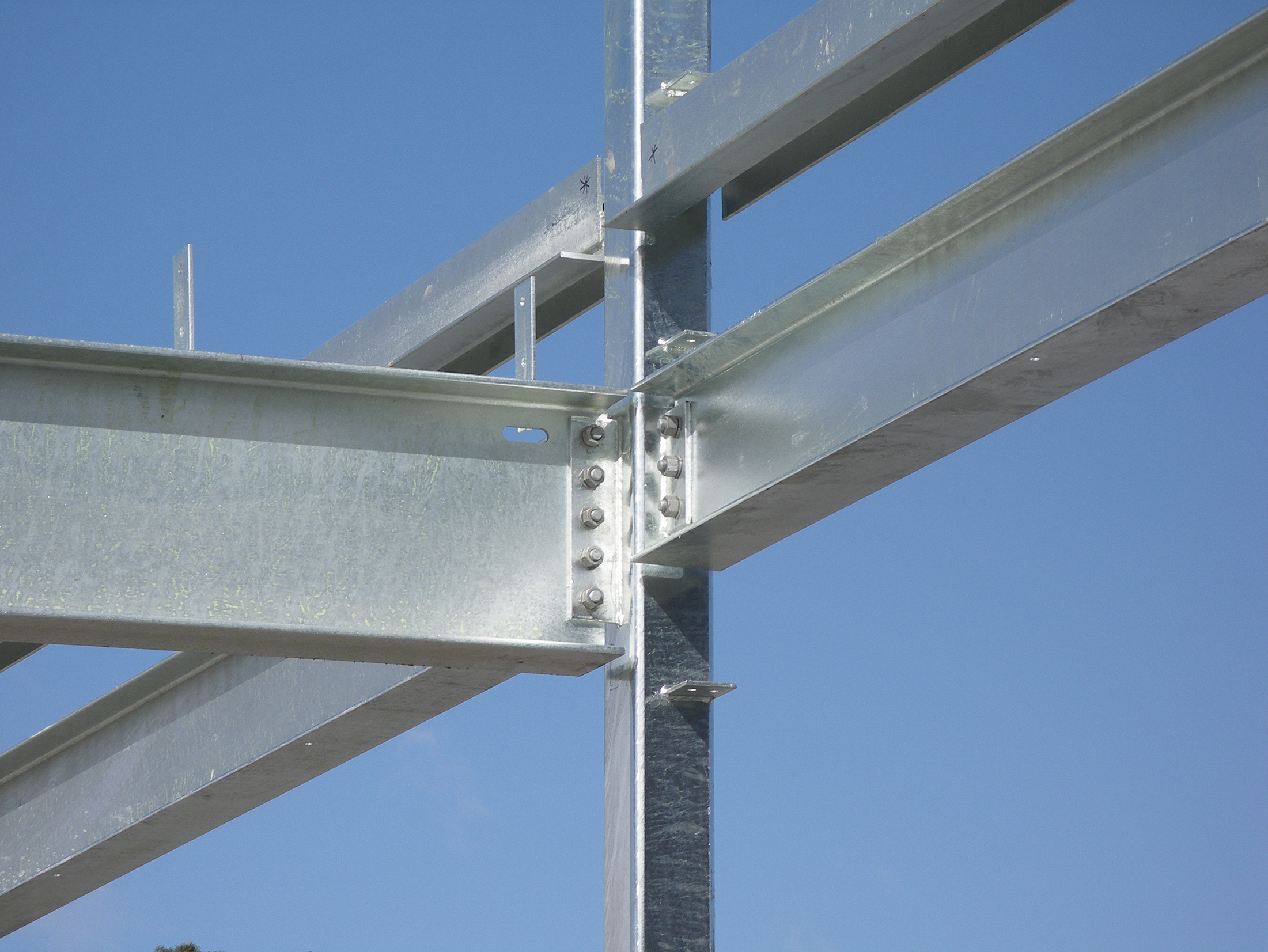Australian Standards for bolting
Design and construction Standards
The design provisions for structural bolts are contained in four major Standards. While the design provisions are usually consistent across the Standards, the specifier should check against the provisions in the relevant Standard.
- AS/NZS 2327, Composite structures — Composite steel-concrete construction in buildings, which covers the design, detailing and construction of composite steel-concrete members (beams, columns, slabs, joints) in buildings
- AS 4100, Steel structures, which covers the design of buildings, structures and cranes constructed of steel
- AS/NZS 4600, Cold-formed steel structures, which is used for the design of structural members cold-formed to shape from carbon or low-alloy steel sheet, strip, plate or bar not more than 25 mm in thickness and used for load-carrying purposes in buildings (bolting procedures in this guide relevant for steel thicknesses ≥ 3mm)
- AS/NZS 5100.6, Bridge design, Part 6: Steel and composite construction, which is used for the design of road, railway and pedestrian bridges, including the design of box and longitudinally stiffened girders
The construction requirements of structural steelwork involving fabrication, corrosion protection, erection, and modification of steelwork, including detailed provisions for bolted assemblies is covered in a single Standard.
- AS/NZS 5131, Structural steelwork – fabrication and erection
Fastener standards
There are four types of structural bolts referenced in Standards and used in Australia. Several of these have been the subject of major revisions in recent years, including AS/NZS 1252, which now incorporates elements of the EN14399 series allowing for strength grade 8.8HR and strength grade 10.9HR assemblies, along with more traditional commercial and high strength grades.
- Commercial bolts to AS 1111.1, strength grade 4.6
- High strength structural bolts to AS/NZS 1252.1, strength grade 8.8
- High strength structural bolts to AS/NZS 1252.1, strength grade 10.9
- Tower bolts to AS 1559, strength grade 5.6
Specialised fasteners such as stud, footing, and anchor bolts are also covered in some of the design Standards. The properties of these fasteners are often as per the common strength grades. The GAA can provide further information as required.
Where not referenced in this document, full details of the Standards listed here can be obtained from
www.standards.org.au.
A major revision to AS/NZS 1252 in 2016 facilitated improved compliance outcomes for high strength bolts. Other changes to that Standard aimed to move towards a bolt specification that was aligned with global supply. AS/NZS 1252 now consists of two parts (technical requirements and verification testing). Part 1 includes the following major changes to the technical requirements:
- Dimensional changes and designation.
- Bolt assembly functional characteristics – introduces a new section, Bolting Assemblies, including the minimum bolt tension for various diameter bolts as well as the minimum nut rotation requirement. This new section finishes off defining the relationship between torque applied to the nut (or bolt) and the tensions developed in the bolting assemblies.
- Bolt assembly test – essentially demonstrates if the bolt assembly can be tightened to meet the required minimum tension.
- Identification, certification, and testing – introduces a new section, Identification, certification, and testing, which covers the required identification of the product on the packaging, the testing and test report required and the requirement for a declaration of conformity from the manufacturer.
- Product conformity – introduces a new Appendix, Product Conformity, which gives information about the minimum required sampling and test plans to demonstrate product conformity.
- Alternative assembly type – allows the use of EN 14399-3 System HR property class 8.8 bolt assemblies as the only alternative assembly type deemed to satisfy AS/NZS 1252.1.
- Additional assembly type – incorporates an assembly type to EN 14399-3 System HR property class 10.9 bolt assemblies as an additional assembly type in AS/NZS 1252.1.
Hot dip galvanizing Standard for fasteners (bolts, nuts, and washers)
AS/NZS 1214, Hot-dip galvanized coatings on threaded fasteners
(ISO metric coarse thread series) is the Standard used to specify hot dip galvanized coatings on structural fasteners. This Standard was modified in 2016 to align with the international Standards and to support the changes to AS/NZS 1252. It provides users with simpler specification and purchasing arrangements consistent with international norms. The new AS/NZS 1214 is essentially an adoption of ISO 10684.
Throughout this document references to hot dip galvanized fasteners assume that hot dip galvanizing is carried out to AS/NZS 1214.
Table 1: Key structural fastener standards


AS/NZS 1214 provides users with simpler specification and purchasing arrangements consistent with international norms.




